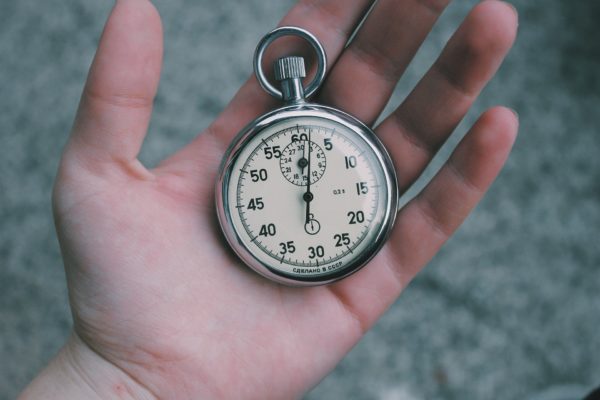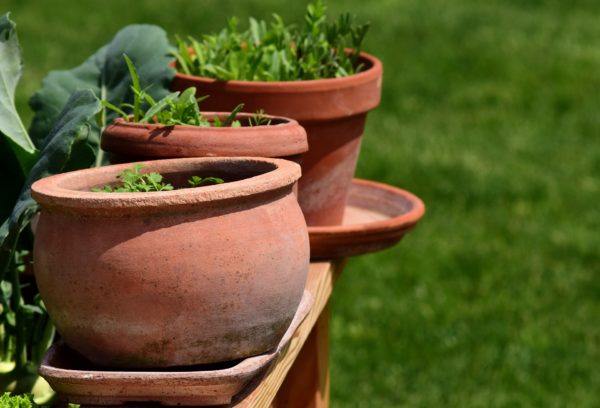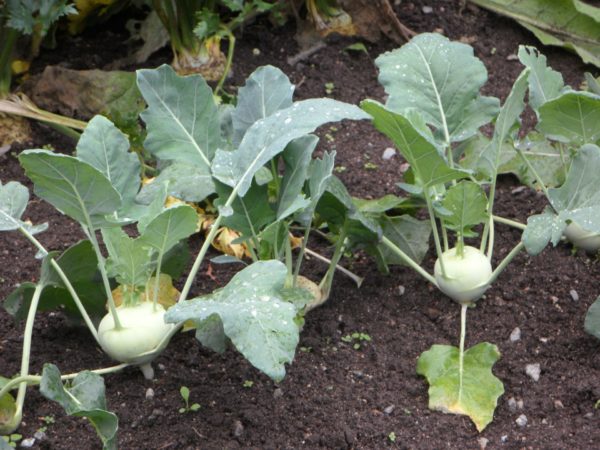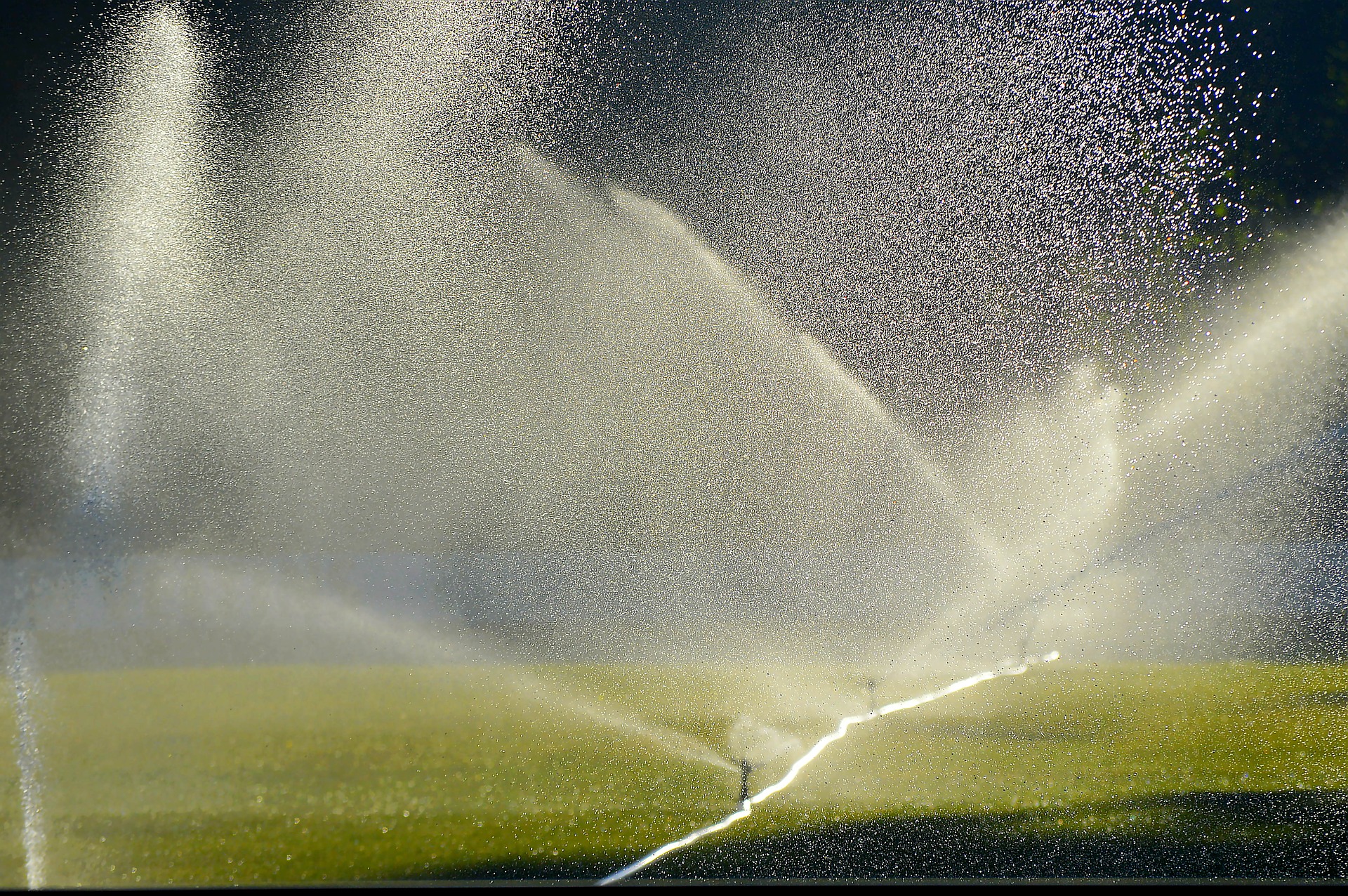In the course of my occupation with the topic of irrigation, I also delved into the topic of correct watering. In doing so, I have gained some surprising insights that deviate greatly from how it is usually handled and seen as correct.
What time of day should you water?
Best in the morning or in the evening. This avoids a large part of the applied water evaporating in the midday sun. Morning is still preferable to evening. Because if you water too late in the evening, the moisture stays in the ground overnight and promotes fungal growth. In addition, the remaining wetness attracts slugs.
The information that watering during the worst midday heat burns the lawn due to a lens effect of the water droplets belongs in the realm of fairy tales. I don’t know anyone who has ever managed to do this and according to web sources it is not physically possible or only possible under extreme, very rare conditions. Nevertheless, it just doesn’t make any sense under normal circumstances, see above.
My tip: Water early in the morning!
How often should you water?

Proper watering duration and frequency is the key decision
Here is the most common mistake! Definitely not 15 minutes every day! This is completely nonsensical and wastes water. Why? Depending on the season, the lawn requires approx. 0.37 t0 0.49 gallons of water per square foot (loose sandy soil) or 0.49 to 0.61 gallons (loamy soil) per week. For every 0.1 gallon poured per square foot, the water soaks about 1.6 inches into the soil. If you divide the 0.37 gallons, e.g. over the week and pour about 0.052 gallons every day, the water is just about 0.8 inches deep. However, the sod roots go as deep as 5.6 inches into the soil, so the deeper roots never receive water with this watering method. A consequence of the constant short watering is that the deep-seated roots wither and the root zone increasingly shifts to the higher layers. This makes the lawn less resilient because it can no longer absorb water from deeper layers. Constant watering becomes a must.
In addition, with short watering, a relatively large proportion of the water on the surface is lost through evaporation before it even gets into the ground.
My tip: Water your lawn properly once a week. Depending on the watering method, this can mean watering it for about 1 hour or longer. Check the water consumption within the watering period and convert this to the irrigated square feet, then you will know how many gallons each square foot has received. Each square foot should receive 0.37 to 0.61 gallons of water depending on the season (see below).
I only recommend deviating from this method during periods of extreme heat (86 degrees Fahrenheit or more for several days), as the lawn cannot withstand that long without new water during these exceptional phases with extreme evaporation: In such cases, it is advisable to increase the total amount of water by 20% and not to apply it in a single pouring process, but to pour half the amount twice a week.
Switch from incorrect to correct watering
If you have watered your lawn incorrectly as described above for a long time, i.e. at short intervals instead of weekly, then you must not switch watering abruptly. Your lawn is spoiled and expects a small daily dose. You have to introduce him to the new watering method carefully and gradually over a period of several months. Your lawn gradually forms longer roots and learns to survive short periods of drought unscathed. It becomes more resistant and less susceptible to diseases.
Spade test
If you are unsure whether your watering duration is correct and whether the water is watering the soil deep enough, you can use the spade test to check this: Simply dig out a piece of earth with a spade a few hours after watering has taken place. The soil should be moist to a depth of 6 inches (indicated by the darker colour).
Watering potted plants

In contrast to lawn or bedding plants, plants that are grown in containers cannot form deep roots and therefore have to be watered more often, sometimes daily in midsummer. Rule: The smaller the container, the more water is needed. Alternatively, potted plants can also be submerged in water. To do this, place the bucket completely in a bucket of water until the soil of the plant has soaked up water.
Watering freshly laid lawn
The previously recommended rhythm does not apply here either! Newly sown lawns that have not yet taken root need water several times a day in the early days so that the seedlings do not dry out. Only when the lawn has grown well can you switch to the recommended watering method.
How much should you water?
This depends on the time of year and the nature of the soil, as a guide the following values can apply:
- April, May: 0.37 gallons/square foot
- June to August: 0.49 to 0.61 gallons/square foot
- September, October: 0.25 to 0.37 gallons/square foot
Natural precipitation must be deducted from this amount! If you don’t want to estimate it, but want to know exactly, you can use a rain gauge. A very simple model, which you can get for a few dollars, is sufficient here. This is placed in a free spot in the garden. If it rains, the rain gauge fills up and shows the amount of rain. After watering, it is emptied and thus reset to zero.
The quantities given apply to lawn. Lawn areas below a treetop have a higher water requirement because the tree drinks away part of the poured water. With other plants, the rule tends to apply: the larger the plant, the greater the need for water. Mediterranean plants that you have in a rock garden, for example, deviate from this, in principle – if they are outdoors and get rainwater – they do not need to be watered at all.
Watering the vegetable patch

As with the lawn, the vegetable patch should only be watered once a week, but extensively. The water requirement is slightly lower and is around 0.25 gallons/square foot.
How to water
Irrigation with sprinklers is appropriate for lawns, but avoid watering the foliage of bushes, shrubs and hedges. The water evaporates particularly strongly there and can lead to fungal diseases if the leaves do not dry overnight. It is therefore more efficient and better to water the soil below the plants. Dripping hoses are available as an automated solution.
Can you water too much?
Yes, that is also possible, but it rarely happens. Too much water can cause lawn roots to rot. This is indicated by the floor smelling or turning blue.
Do you have to water in winter too?
Usually not. However, if there are long periods of drought without precipitation in winter, then you should water evergreen plants and the lawn very carefully to avoid damage from a lack of water. In many cases, plant death attributed to the harsh winter is actually a result of the plants drying out.

